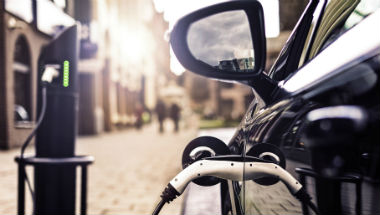Consider electric or hybrid NHS and local authorities urged to reduce vehicle air pollution
21 Sep 2018 11:44 AM
Driver training and car sharing should also be considered in bid to reduce emissions.

Air pollution can be cut if public sector organisations consider replacing high polluting vehicles with low-emission ones at the end of their working life, NICE says in new draft guidance.
Local authorities and NHS organisations should also ensure the services they commission, identify how they will reduce emissions from their vehicle fleets to improve air quality.
The recommendations are made in new draft quality standard guidance from NICE on Air Pollution: outdoor air quality and health published yesterday (21 September 2018).
It has been estimated in a study by Oxford University and the University of Bath that total air pollution from cars and vans costs the UK £5.9 billion a year to health, almost £1 billion of this cost can be attributed to treatment costs from hospital admissions and treatment of related illnesses.
Professor Gillian Leng, deputy chief executive and director of health and social care at NICE, said: “The public sector has a key role to play in reducing the emissions from its vehicle fleet. Promoting an efficient driving style can not only reduce the amount of air pollutants from vehicles but also save money through reduced fuel consumption.
“Organisations should make low vehicle emissions one of the key criteria when making routine procurement decisions. This could include selecting low-emission vehicles, including electric vehicles.
“Lowering road-traffic-related air pollution will help reduce the significant financial costs currently incurred by the NHS through treating related illnesses.”
The public sector fleet is substantial and includes various vehicle types, some of which are highly polluting. When replacing vehicles in their fleet, organisations should consider low-emission car, vans and lorries.
Training drivers in techniques such as smooth acceleration and braking, not over-revving the engine, efficient gear changing, no idling when parked or making a delivery and ensuring tyres are inflated to the correct level can help to improve fuel efficiency and cut emissions.
Other recommendations include giving advice to people in vulnerable groups attending a health appointment - when air pollution is high or very high - on how to minimise their exposure and manage their symptoms.
Planners should identify in their local plan and other key strategies how they will address air pollution, including enabling zero and low-emission travel and how to design buildings and spaces to improve air quality.
Applications for major developments should be scrutinised by local planners to minimise and mitigate road-traffic-related air pollution.
A consultation has opened on these draft guidelines and it will close on October 9, 2018.